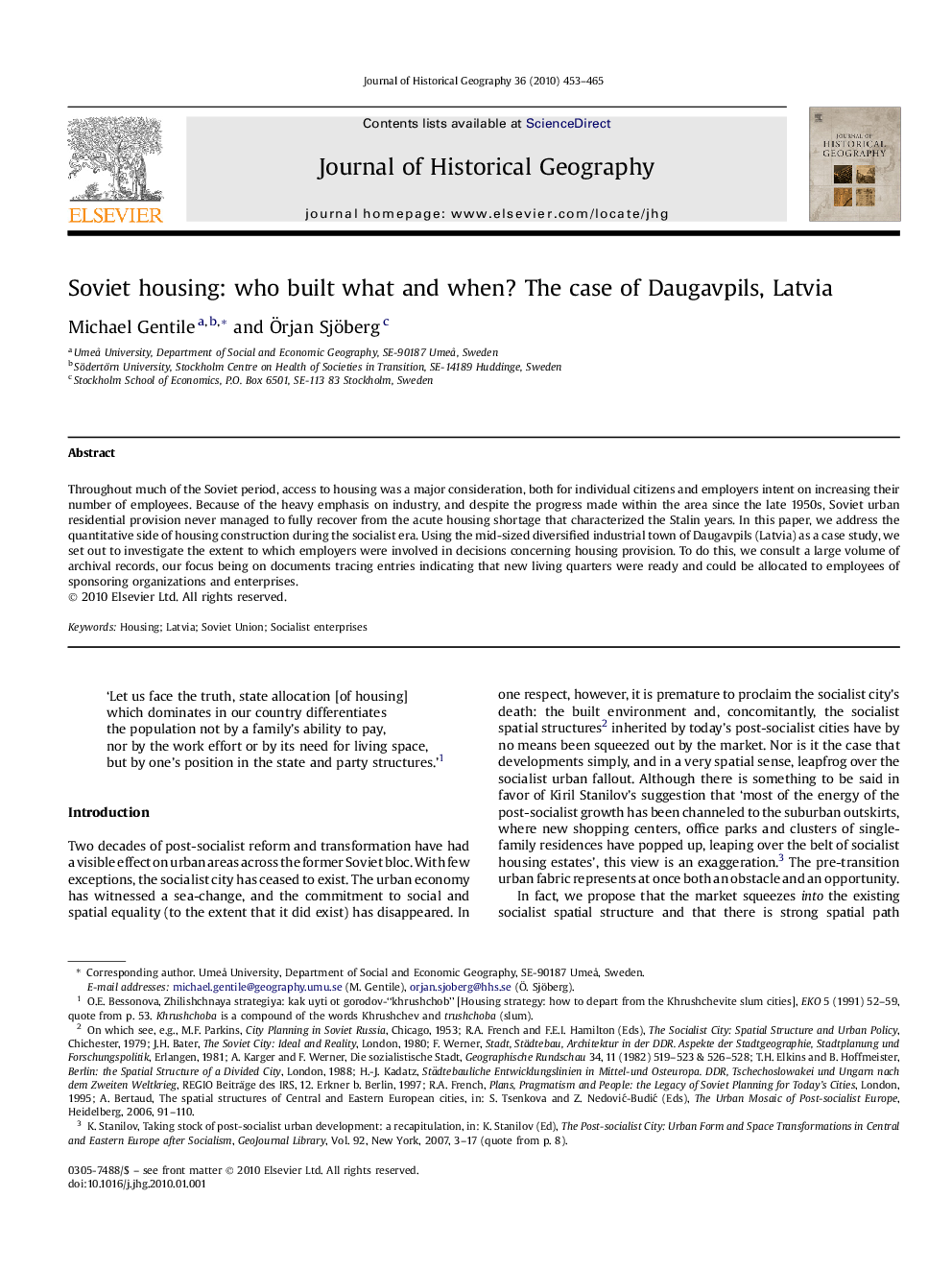| Article ID | Journal | Published Year | Pages | File Type |
|---|---|---|---|---|
| 1039168 | Journal of Historical Geography | 2010 | 13 Pages |
Throughout much of the Soviet period, access to housing was a major consideration, both for individual citizens and employers intent on increasing their number of employees. Because of the heavy emphasis on industry, and despite the progress made within the area since the late 1950s, Soviet urban residential provision never managed to fully recover from the acute housing shortage that characterized the Stalin years. In this paper, we address the quantitative side of housing construction during the socialist era. Using the mid-sized diversified industrial town of Daugavpils (Latvia) as a case study, we set out to investigate the extent to which employers were involved in decisions concerning housing provision. To do this, we consult a large volume of archival records, our focus being on documents tracing entries indicating that new living quarters were ready and could be allocated to employees of sponsoring organizations and enterprises.
